The Standard-winged nightjar
The Standard-winged nightjar : (caprimulgus longipennis) is a nocturnal bird and of the more impressive members of the Caprimulgid family. This specie breeds in dry savannah habitat of central Africa. However, it is related to other nightjars in terms of breeding strategies, roosting, feeding habits and vocalizations. During the breeding season, the male grows highly specialized wing feathers nearly to a length of 38 cm.
Primarily of bare shaft with feather plumes on the end and the feathers are used as part of a flight display to attract female. During the dry seasons from December through March, they are mostly found along the coast from Liberia to western Cameroon. These birds also migrate in order to breed in the northern hemisphere and they winter in Africa. During the summers, their population ranges extend from Scandinavia and Siberia in the north through the northern hemisphere. In Uganda the pearl of Africa this bird can easily be sighted in Murchison falls National Park.
Standard-winged nightjar facts
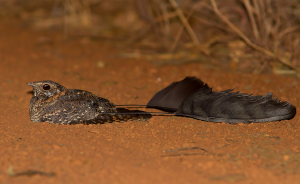
Physical description
Individuals basically reach lengths of 26 to 28cm with wingspans of 57 to 64cm. Standard base body color of the species is grey to reddish-brown. They also have a complex cryptic overlaid markings of white, black and varying shades of brown. Furthermore, the body is reminiscent of falcons, with long pointed wings and long tails. Besides, the adult males possess white lower throats, often divided into two distinct patches by a grey or orange vertical stripe. They also have black-barred chests and undulating dark scapular lines. Females appear similar however possess tan tail and wing patches whereas juveniles look very similar to the adult females. However, are normally paler along with less contrast on the scapulars and bellies.
Behavior
They are not particularly gregarious and live in pairs during the mating seasons and may migrate in groups of 20 or more. Single sex flocks may occur in Africa during the winter season and these individuals are crepuscular. In fact, they forage in the dark, even sometimes on overcast days. Male nightjars are territorial and will defend their breeding territories vigorously, fighting other males in the air or on the ground. During the daytime, when the nightjars are at rest, they usually perch facing into the sun. This is done inorder to minimize their contrasting shadow.
Like other nightjars, it feeds on insects in flight, the huge gape opening wide for moths and beetles that usually fly at dusk often at sundown. Towards breeding, no nest is made and the two elongated and elliptical eggs are placed upon the bare ground. Their cryptic appearance blends perfectly into their habitant and during the daytime, they are usually hidden away sleeping. They are easily detected at night when light from car headlights are reflected ruby-red from their eyes, as they are sitting on tracks or roads. In addition, their presence is most often made known by their loud calls that are given out at dusk.
Mating
The standard winged nightjars are bigamous implying they will take on more than a single mate. They usually breed between May and September. One male and one female form a bond lasting one year and the pair will raise one or two broods. Occasionally pairs may split, and the female may raise another brood fathered by a different male. Actually they don’t construct nests just like other birds but simply place the eggs on the ground on open soil covered with dead leaves. After establishing his breeding territory, he then attracts the attention of females.
Breeding
This is done with an insect-like song as well as a display flight whereby receptive females will join in. In a small, unlined scrape on the ground, the female lays 2 to 4 eggs reddish creamy/ pinkish or smooth elliptical white eggs marked with brown spots. The female then incubates the eggs for 17 to 18 days however her mate will take short shifts while she leaves to feed at dawn and dusk. Here Females are primary incubators, even though the male may care for the first young alone. This is also done in a time especially when the female commits to producing a second brood. The hatchlings are covered in down and are capable of short-distance movements within 24 hours of hatching.
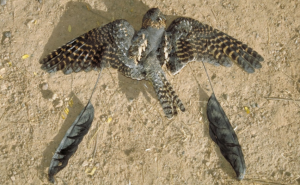 They normally move apart shortly after hatching, maybe to make it more difficult for predators to spot them. However, parents also shove them apart with their feet as they flush from the nest. Usually, the male stands, guards and defends the nest and the young. Only if conditions are favorable, the female will sometimes lay a second clutch close to the first clutch. While she is incubating the new set of eggs, she leaves her first brood with her mate when the chicks are about 14 days old. These birds are always mature and ready to breed approximately at the age of one year.
They normally move apart shortly after hatching, maybe to make it more difficult for predators to spot them. However, parents also shove them apart with their feet as they flush from the nest. Usually, the male stands, guards and defends the nest and the young. Only if conditions are favorable, the female will sometimes lay a second clutch close to the first clutch. While she is incubating the new set of eggs, she leaves her first brood with her mate when the chicks are about 14 days old. These birds are always mature and ready to breed approximately at the age of one year.
Communication
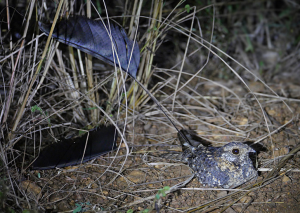
Standard winged nightjars use a wide variety of sounds to communicate but with a common one being a titititititit. Vociferous males utter out long “churring” vocalizations from perches within their territories, sometimes calling for 10 minutes continuously. However, both males and females produce repeated sharp “qoik-qoik” notes as contact calls. Interestingly, at the nest male and female birds make a grunting “wuff”. When the male approaches the nest, he often produces a burbling trill. They also frequently clap their wings together as well as combining acoustic and visual elements of display. This wing clapping probably serves a number of purposes and is a form of communication generally directed to other individuals.
This species is also notable for feigning injury both in the air and on the ground because of their wing clapping behavior. They open their wings and slap them together behind their backs thus creating a smacking noise. Wing clapping is also used in greeting, intimidation, defense and courtship displays. During courtship, the male bird glides about with his wings in a V-shape, frequently clapping them together. When a female alights on the ground, the male lands facing her and they sway in tandem. When the female ceases swaying, the male bobs up and down, opens his wings and spasms his tail momentarily. Before the beginning of copulation and once a pair has formed, the two individuals roost together.
Feeding
These nightjars are generally crepuscular and nocturnal insectivores. They catch flying insects in their wide mouths with the aid of short bills and surrounding rectal bristles. Some common prey organisms include; moths beetles, mayflies, dragonflies, cockroaches, butterflies and occasionally spiders.

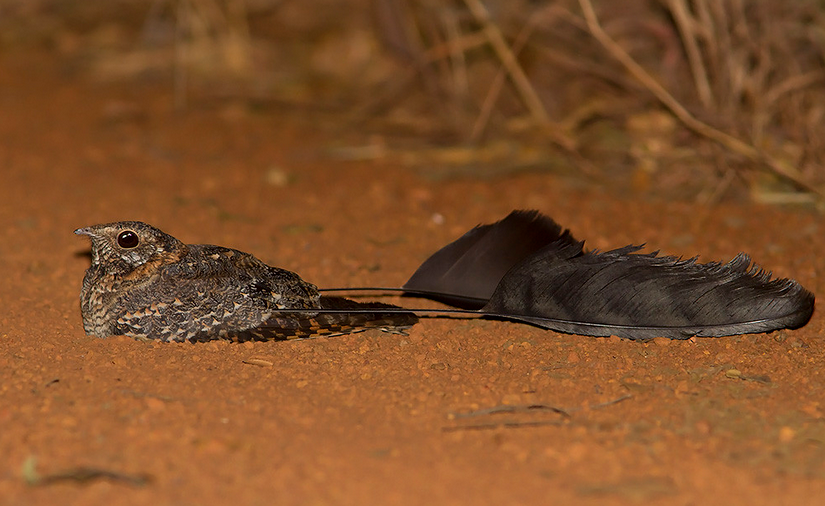
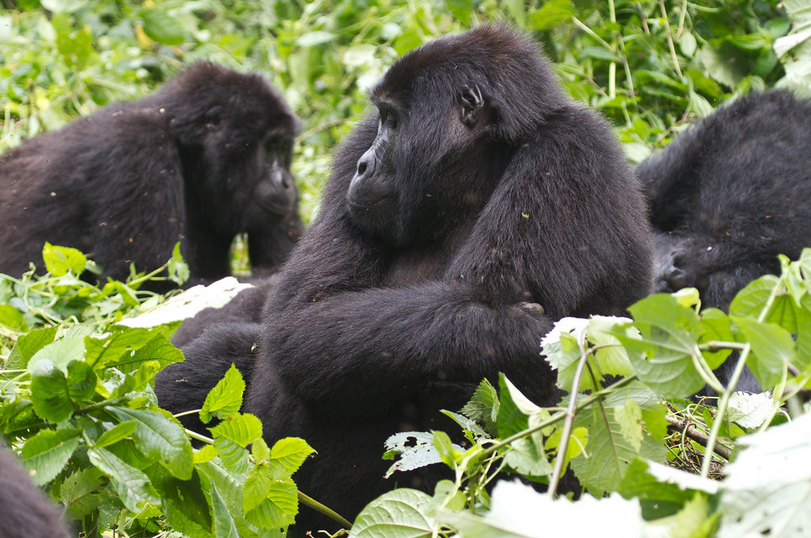
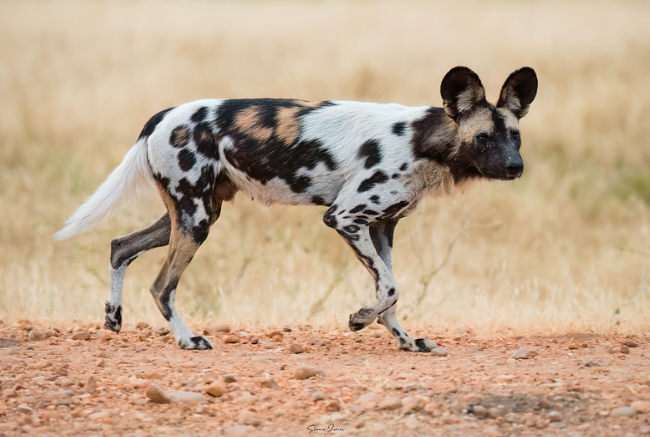


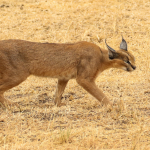






1 Comment
I would like to find and photograph a standard winged nightjar, any suggestions?